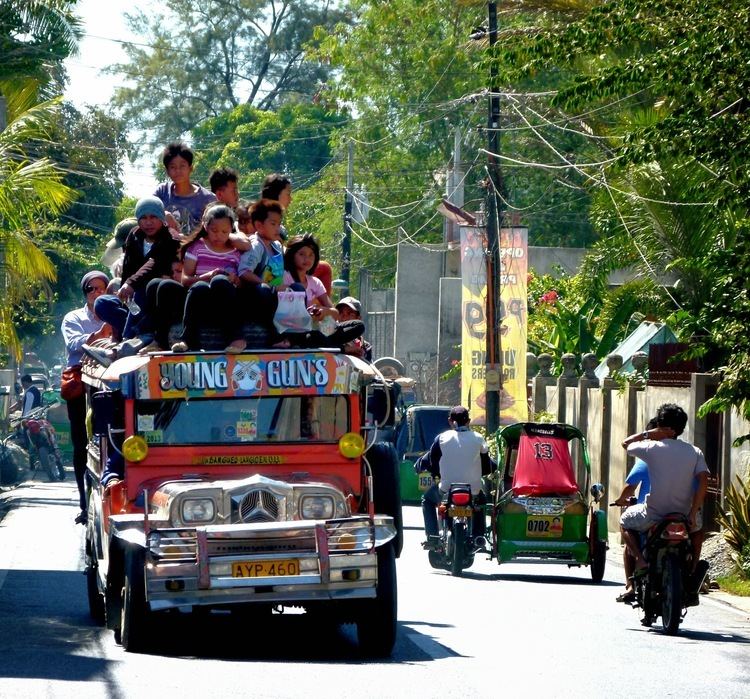Founded 10 March 1917 Area rank 29th out of 81 ZIP code 2800–2826 | Capital Bangued Time zone PHT (UTC+8) Municipalities 27 | |
 | ||
Destinations Narvacan, Bangued, Tineg, Lubuagan, Nueva Era - Ilocos No Colleges and Universities Abra State Institute of Science a, ABRA Valley Colleges, Divine Word College o | ||
Abra (Ilocano: Probinsya ti Abra; Filipino: Lalawigan ng Abra) is a landlocked province of the Philippines in the Cordillera Administrative Region in Luzon. Its capital is Bangued, and is bordered by Ilocos Norte on the northwest, Apayao on the northeast, Kalinga on the mid-east, Mountain Province on the southeast, and Ilocos Sur on the southwest.
Contents
- Map of Abra Philippines
- Pre colonial period
- Spanish era
- American period
- World War II
- Modern history
- Geography
- Administrative divisions
- Barangays
- Demographics
- Economy
- References
Map of Abra, Philippines
Pre-colonial period
The first inhabitants of Abra were the ancestors of the Bontocs and the Ifugaos. These inhabitants eventually left to settle in the old Mountain Province. Other early inhabitants were the Tingguians, or Itnegs, as they are also known.
Spanish era
In 1598, a Spanish garrison was established in Bangued to protect Christian Ilocanos from Tingguian raids. Originally the area was called El Abra de Vigan ("The Opening of Vigan"). During the British Occupation of the Philippines, Gabriela Silang and her army fled to Abra from Ilocos and continued the revolt begun by her slain husband, Diego Silang. She was captured and hanged by the Spanish in 1763.
In 1818, the Ilocos region, including Abra, was divided into Ilocos Norte and Ilocos Sur. In 1846, Abra was created as a political-military province with Lepanto as a sub-province. It remained so until the arrival of the Americans in 1899.
American period
In 1908, the Philippine Commission again annexed Abra to Ilocos Sur in an attempt to resolve Abra's financial difficulties. On March 9, 1917, the Philippine Assembly re-established Abra as a province.
World War II
In 1942, the Japanese forces occupied the Philippines and entered Abra.
Abra was liberated by the Philippine Commonwealth forces and local Cordilleran guerrillas during the Battle of Abra in 1945, at the end of the Second World War.
Modern history
The revolutionary Marxist priest, Conrado Balweg, who fought for the rights of the Cordillera tribes, began his crusade in Abra. After successfully negotiating a peace accord with Balweg's group in 1987, the Philippine government created the Cordillera Administrative Region, which includes Abra.
Geography
Abra is situated in the mid-western section of the Cordillera Administrative Region in Luzon. It is bordered by the provinces of Ilocos Norte on the northwest, Apayao on the northeast, Kalinga on the mid-east, Mountain Province on the southeast, and Ilocos Sur on the southwest. Abra has a total land area of 4,165.25 square kilometres or 1,608.21 square miles.
The province is hemmed in by the towering mountain ranges of the Ilocos in the west and the Cordillera Central in the east. The Abra River runs from the south in Benguet to the west and central areas, bisecting the whole Abra Valley. It is joined by the Tineg River originating from the eastern uplands at a point near the municipality of Dolores.
Administrative divisions
Abra comprises 27 municipalities, all encompassed by a single legislative district.
Barangays
The 27 municipalities of the province comprise a total of 303 barangays, with Poblacion in La Paz as the most populous in 2010, and Pattaoig in San Juan as the least.
Demographics
The population of Abra in the 2015 census was 241,160 people, with a density of 58 inhabitants per square kilometre or 150 inhabitants per square mile.
Abra's inhabitants are mostly descendants of Ilocano settlers and members of the Tingguian tribe. Based on the 2000 census survey, Ilocanos comprised 7001719400000000000♠71.94% (150,457) of the total provincial population of 209,146. Tingguians came in second at 7001187000000000000♠18.7% (39,115), while other ethnic groups in the province were the Ibanag at 7000446000000000000♠4.46% (9,334), Itneg at 7000317000000000000♠3.17% (6,624), and Tagalog at 6999420000000000000♠0.42% (869).
The predominant languages are Ilocano and Itneg.
Economy
As of 1990, there were 743 cottage industries in Abra, of which 208 are registered with the Department of Trade and Industry. 59% are engaged in bamboo and rattan craft making, both leading industries in the area.
In 1992, the natural dye industry, together with loom weaving and embroidery, was revived by former Governor Ma. Zita Claustro-Valera, the first female governor of Abra.
Abra's economy is agriculture-based. Its major crops are rice, corn, and root crops; commercial products include coffee, tobacco, and coconut. Extensive grassland and pasture areas are used for livestock production.
